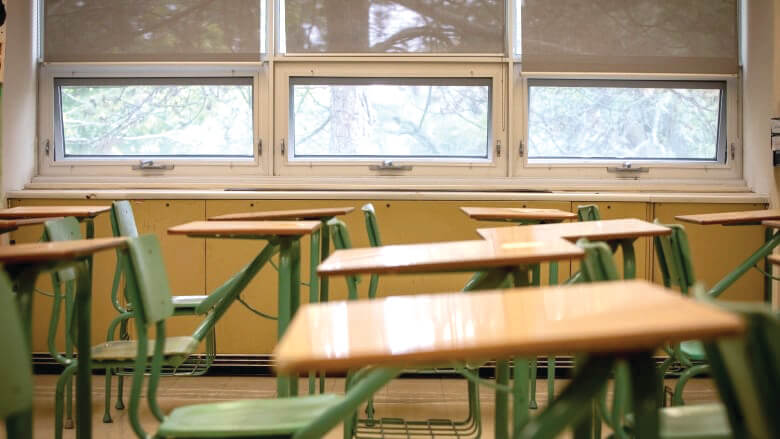TDSB says expanding virtual secondary school ‘untenable’ with over 18,000 students enrolled
Board says in memo that virtual school won’t accept more students for next quadmester.
The Toronto District School Board says another expansion of its virtual secondary school is “untenable” and the online high school will not accept more students for its second quadmester.
Students who are attending school in person but who wish to switch to online learning exclusively will have what the board calls a “virtual option” through their home school, the TDSB said in a memo to high school teachers on Wednesday (21). The means learning online in a format that is delivered locally.
More than 18,000 students decided to enrol in Secondary Virtual School at the start of the school year and hundreds more have since indicated an interest in switching. The board said the number now interested is a “source of concern.”

“As we approach Quadmester 2 … it is clear that the sheer size and scope of the Virtual School as an educational enterprise is such that its continued expansion is an untenable proposition,” the memo said.
“In an effort to provide more stability and consistency for students and staff, the Secondary Virtual School will not be accepting additional students for Quadmester 2. Instead, students presently enrolled in a bricks and mortar school, who opt for virtual learning, will be accommodated with a virtual option at or through their current school.” Ryan Bird, spokesperson for the TDSB, said the board wants to avoid a “significant upheaval.”
“If we have to move teachers out of bricks-and-mortar schools, that really reduces the options when it comes to courses for our students in bricks-and-mortar or in-person learning. We really want to make sure there’s that stability and still the breadth of options for in-person learning,” Bird said.
Board surprised by interest in virtual learning
If the board offers virtual learning by home school teachers, there won’t be a reduction in course options, Bird said.
The board is surprised at the amount of interest in its virtual school, he added. There are about 64,000 elementary and more than 18,000 secondary students enrolled in the online option. Meanwhile, there are about 105,000 elementary and 52,000 students enrolled in person at schools.
“When you’re talking of just over 80,000 students, I don’t think we ever anticipated that it would be literally the size of some of the largest school boards in all of Ontario in our virtual school alone. We really have to be flexible ourselves to make sure that we’re adjusting to this interest in virtual school,” Bird said.
“We want to make sure this works for everyone. That’s why we are trying to offer some flexibility.”
In the memo, the board said moving some students and teachers would force the schools to collapse courses and sections, the board said.
As well, if teachers were taken from schools to teach at the virtual school, the educators left in the bricks-and-mortar schools may not be qualified to teach classes that students need to graduate. Those classes would have to be cancelled and school might not have enough sections of courses to accommodate students.
Reorganization would be “even more complicated” because of teacher qualifications and the quadmester schedule itself. For example, teachers who taught two courses in Quadmester 1 can only teach one course in Quadmester 2 and vice versa.
As well, the platform used for virtual school, known as Trillium, was not developed to support a such a large number of students, the board added.
“Ultimately, this decision was made to prevent a large-scale reorganization of teachers, the re-timetabling of students, and to maintain as much stability in our schools as possible. The practical consequence is that a further reallocation of teachers from bricks and mortar schools to the Secondary Virtual School will not be required for Quadmester 2,” the memo said.
The board said it plans to survey students who are attending school in person and their families in the coming days to help the board gauge the level of student interest in a “learning program that is exclusively virtual and delivered locally” but not through the Secondary Virtual School.
CBC/MS








Redes Sociais - Comentários